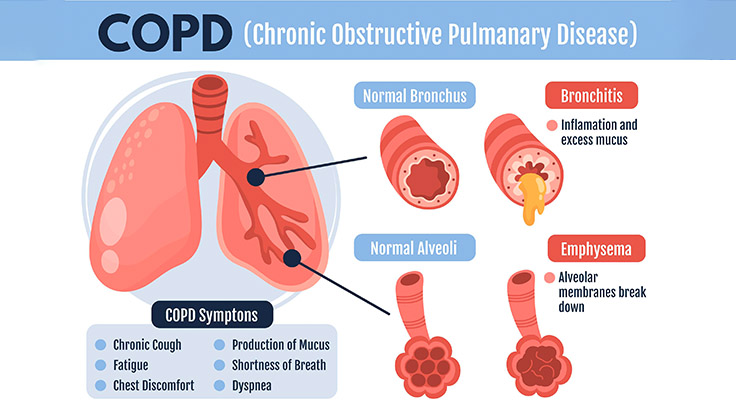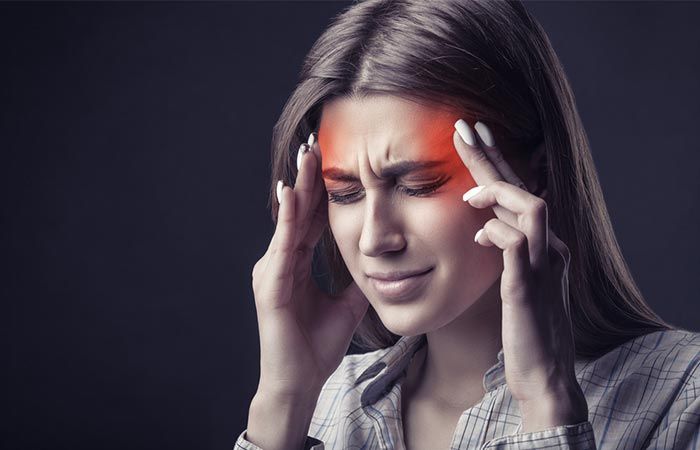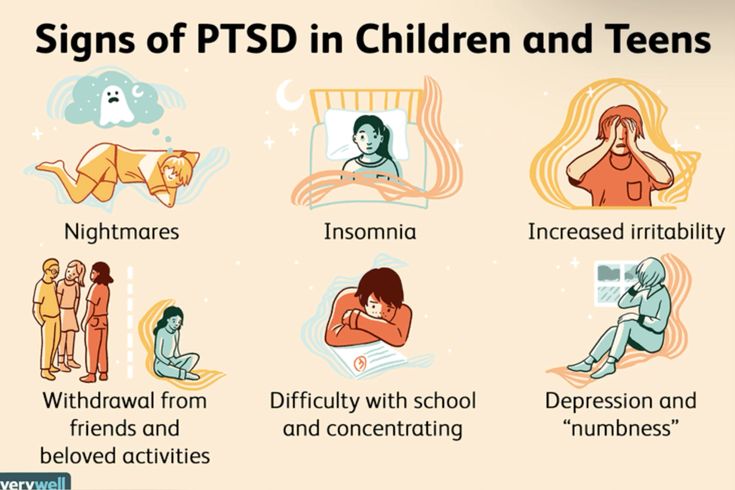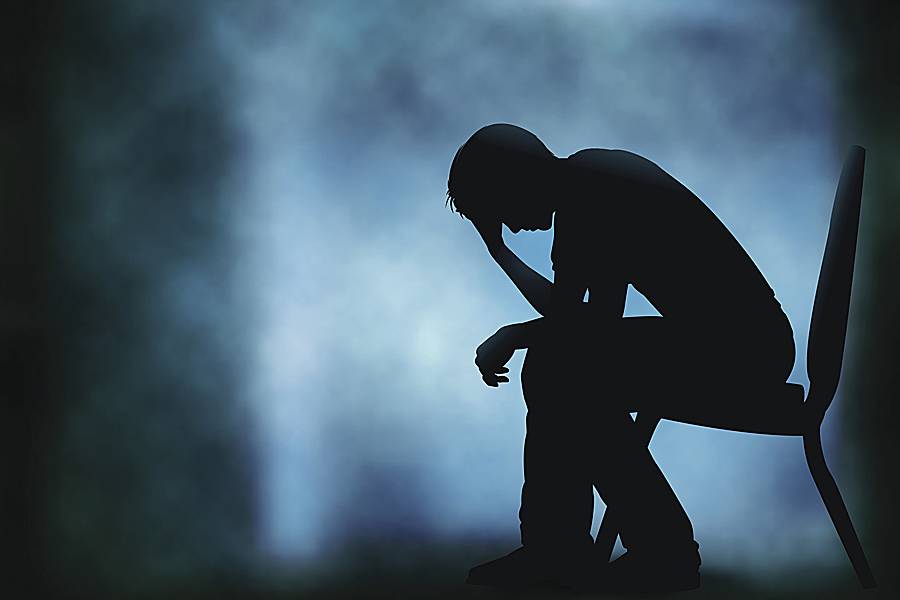Chronic Obstructive Pulmonary Disease (COPD): Causes, Symptoms, and Treatment
Breathing becomes difficult when you have Chronic Obstructive Pulmonary Disease (COPD), a progressive lung condition. About 16 million Americans suffer from COPD, and millions more go misdiagnosed, according to the Centers for Disease Control and Prevention (CDC). Here, we go into the causes, signs, and available treatments for this life-altering illness, as well as advice from American pulmonologists.

COPD: What is it?
A collection of lung conditions that obstruct airflow and make breathing difficult, mainly emphysema and chronic bronchitis, are together referred to as COPD. Since it is a progressive condition, it gets worse with time.
Reasons for COPD
Chronic exposure to lung irritants, particularly cigarette smoke, is the main cause of chronic obstructive pulmonary disease (COPD). Other reasons are as follows:
- Secondhand smoke exposure
- Extended exposure to air pollutants or dust or chemicals at work
- Although uncommon, genetic factors such Alpha-1 antitrypsin deficiency
COPD symptoms
The symptoms of COPD might increase with time and often appear gradually. Typical signs and symptoms include:
- Chronic mucus-producing cough, commonly referred to as “smoker’s cough”
- Breathlessness, particularly with vigorous activity
- Wheezing
- Chest tightness
- recurring infections of the respiratory system
- Weariness or low vitality
- Unintentional weight loss (later on)
See your doctor for an assessment if you have these symptoms, particularly if you have a history of smoking.
How does one diagnose COPD?
Spirometry tests are advised by American pulmonologists in order to identify COPD. Spirometry calculates how much air you can breathe in and out, as well as how fast you can do it. Additional diagnostic resources consist of:
- CT scans or chest X-rays to assess lung damage
- Analyzing arterial blood gases to determine oxygen levels
- If you are under 45 or have never smoked, lab tests can be used to rule out hereditary factors.
Options for COPD Treatment
Despite being incurable, COPD can be treated to improve quality of life, lessen complications, and relieve symptoms.
1. Modifications in Lifestyle
- Give Up Smoking
Renowned pulmonologist Dr. David Mannino of the University of Kentucky highlights:
Quitting smoking is the most crucial action a person with COPD can do. Although there is no way to repair lung damage, quitting smoking can stop further decline.Refrain from Lung Irritants
Avoid pollutants, secondhand smoking, and irritants at work. It could also be beneficial to use air purifiers at home.
2. Drugs
Common prescriptions from doctors include:
- Short-acting or long-acting inhalers known as bronchodilators are used to relax the muscles in the airways.
- Corticosteroids inhaled to lessen inflammation
- Combination inhalers that contain steroids and bronchodilators
- To reduce airway inflammation, use phosphodiesterase-4 inhibitors such as roflumilast.
- Due to adverse consequences, theophylline is used less frequently these days.
3. Rehabilitation of the Pulmonary System
A organized program called pulmonary rehab includes:
- Strengthening breathing muscles with exercise
- Nutritional guidance
- Instruction on managing COPD
- psychological assistance
Leading pulmonologist Dr. MeiLan Han of Michigan Medicine observes:
“Pulmonary rehabilitation can significantly improve overall quality of life, decrease dyspnea, and increase exercise tolerance in patients.”
4. Treatment with Oxygen
Supplemental oxygen therapy may be necessary for patients with severe COPD and low blood oxygen levels in order to improve their breathing and shield their organs from oxygen deprivation.
5. Surgical Interventions
Surgical possibilities for cases of advanced COPD include:
- In order to enhance breathing, damaged lung tissue is removed during lung volume reduction surgery (LVRS).
- Removing big air sacs (bullae) that impair lung function is known as a bullectomy.
- Patients with severe respiratory issues and end-stage COPD may be candidates for lung transplantation.
Having COPD
Living with COPD necessitates cautious handling:
- Take prescription drugs as directed.
- Vaccinate against pneumonia and the flu every year.
- Keep your weight and diet in check.
- Take part in mild exercise to increase lung capacity.
- Track symptoms and get medical attention if they get worse.
Support on an emotional level
Depression and anxiety can be brought on by COPD. Numerous counseling programs and support organizations for people with COPD in America can assist patients and their families in overcoming these obstacles.
Treatment of COPD in the Future
Future research into stem cell therapies and regenerative medicine may be able to cure lung damage. Novel drugs that target particular inflammatory pathways implicated in the pathogenesis of COPD are being tested in clinical trials.
Concluding remarks
Chronic obstructive pulmonary disease is a dangerous, progressive illness that needs to be managed holistically. Patients can retain a high quality of life with early diagnosis, quitting smoking, using the right drugs, and changing their lifestyle. Dr. Mannino’s conclusion:
"Your life doesn't have to be controlled by COPD. Patients can effectively control their symptoms and continue to be active with the correct care and assistance.


